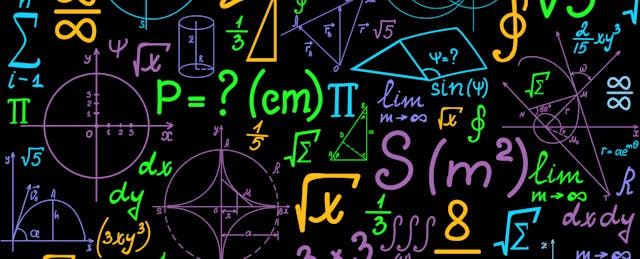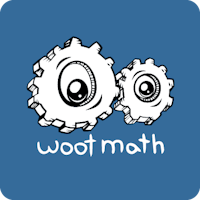After several decades of experimentation with technology in schools, we continue to face fundamental questions: What role should technology have in the classroom? How often should it be used? What are the opportunities for technology to transform both teaching and learning?
As the CEO of Woot Math and previously of Kerpoof, I have spent the last ten years grappling with questions like these. Of course the answers are not easy or obvious, but I think asking these type of questions is critical in mapping a path towards innovation. Sometimes that path involves a deep dive into specific aspects of practice or pedagogy, such as the recent conversations I had with several math teachers that we work with closely. I found what they had to say about formative assessment and their use of technology inspiring, and have included their videos below.
But sometimes it is helpful to step back and consider what technology does best in the broadest terms—in communications, financial markets, self-driving cars, medicine or education—to improve, make more efficient, and even replace entire paradigms.
For example, I found this 2017 Google announcement to be truly awe inspiring: Google created a program, AlphaZero, provided it no knowledge except the rules of chess, and let it play only against itself. In 24 hours, it was able to play chess better than any human or chess program in history; it also mastered the games of Go and Shogi in the same day. A mathematician friend of mine summed it up well when he said, “I have to say the AlphaZero articles left me slack-jawed. In some sense it's like what happened when people tried to imitate bird flight, but ended up inventing the airplane."
The Alpha Zero example highlights technology’s awesome ability at gathering, processing and learning from data. These abilities parallel many of the tasks that teachers perform in order to implement effective formative assessment in the classroom. They gather, process, and learn from student data to inform the arc of instruction and improve student outcomes. I believe passionately that technology can be of tremendous help in reducing the time and effort required in the preliminary steps of formative assessment—freeing teachers to focus on applying insights into student thinking, enabling rich whole-class discussions and building student confidence. Teaching math is more complicated than playing the game of chess; but as we better harness the potential of technology for the classroom, we have a real opportunity to help more students succeed.
The extraordinary teachers featured below would be effective with or without edtech tools, but all of them have figured out how to use technology to impact their students in meaningful ways. I love when Cary lights up sharing the a-ha moments that come from rich classroom discussion and the opportunity to celebrate and learn from mistakes. I love when Leslie shares how accessing students’ work makes for a better teaching moment. I love when Andy says his job is helping his students not be afraid of being wrong. I think you will love these videos too, and I encourage you to take a few minutes and watch them.
The Beauty of Misconceptions
Cary Hoste—Casey Middle School, Boulder, CO
In this first video, math teacher Cary Hoste explains how her middle school's new one-to-one program has given her the opportunity to make her own teaching more effective—in any given moment. Using powerful formative assessment technology, she can now identify “aha” moments more quickly, make instructional shifts in minutes, and learn immediately when her students have grasped a concept fully. She discusses the beauty of misconceptions, and how "technology is actually supporting rich learning, as opposed to just rote practice."
Capturing Nuance
Leslie Pritchard—Mead Middle School, Mead, CO
In this second video, math teacher Leslie Pritchard details some shortcomings of many formative assessment tools for the math classroom, including the need to capture more nuanced responses than what can be provided by multiple choice platforms. “If your formative assessment is all geared around [multiple choice], I don’t think you are getting a real accurate sample of what the students really understand,” she says. Projecting actual student work in her class in real time fosters rich discussion and leads to “a better teaching moment” and deeper understanding of mathematics.
Making Mistakes and Building Confidence
Andy Scott—Skyline High School, Longmont, CO
Perhaps the greatest gain from being able to capture and share actual student work in real-time is the measurable impact on student confidence and their resulting shift to thinking of mistakes as a normal part of the journey in making sense of mathematics. High school teacher Andy Scott has taught math on three different continents and has been disappointed to find a persistent hatred of math. He is on a mission to change that perception. “I think getting over that fear of getting it wrong . . . the fear of it being not in your genes, or whatever, is a big part of my job selling math.”
In a recent article, the University of Colorado Boulder’s David Webb defines formative assessment as “the heart of student-centered instruction; a dynamic classroom practice that uses student responses to inform instructional decisions”. His definition provides valuable understanding into how technology can best serve teachers and students: by giving teachers dynamic and real-time insight into student thinking, and providing students with real-time feedback.
I believe technology today can help teachers realize a more student-centered classroom, foster richer and more lively conversations about mathematics, and help students create deeper connections with each other and with the material. These videos shine a light on the potential for technology—in the hands of capable educators—to promote both teaching and learning.
My Formative Assessment Reading List
- The Formative 5: Everyday Assessment Techniques for Every Math Classroom
- Embedded Formative Assessment: Strategies for Classroom Formative Assessment
- #FormativeTech: Meaningful, Sustainable, and Scalable Formative Assessment with Technology
- Classroom Assessment for Student Learning: Doing It Right - Using It Well
- Smarter Together! Collaboration and Equity in the Elementary Math Classroom
- Embedding Formative Assessment - Practical Techniques for K-12 Classrooms



